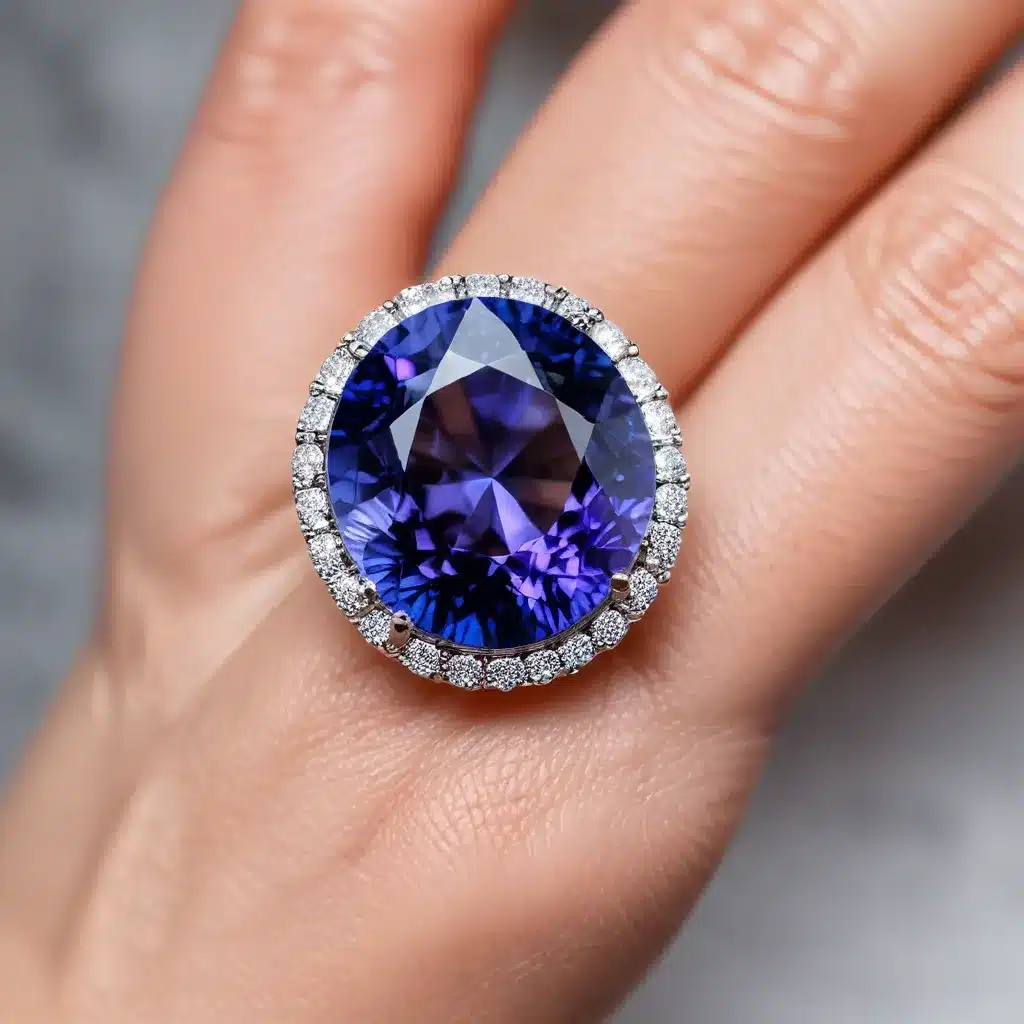
In a world where sustainability and innovation go hand in hand, lab-grown gemstones have emerged as a captivating alternative to their mined counterparts. These man-made wonders, produced in controlled laboratory environments, possess the same optical, physical, and chemical properties as natural gems, offering a dazzling and eco-conscious choice for jewelry enthusiasts.
Characteristics of Lab-Grown Gemstones
Lab-grown gemstones, such as synthetic diamonds, lab-created emeralds, and lab-created rubies, are produced using advanced technologies that mimic the natural growth processes found within the Earth’s crust. These gemstones are chemically, physically, and visually identical to their natural counterparts, making them virtually indistinguishable to the naked eye. The key difference lies in their origin – while natural gems take millions of years to form, lab-grown stones can be created in a matter of months, allowing for a wider range of colors, sizes, and flawless clarity.
Difference Between Natural and Lab-Grown Gemstones
The primary distinction between natural and lab-grown gemstones lies in their formation process. Natural gems are the result of complex geological processes that unfold deep within the Earth’s mantle, shaped by immense pressure and temperature over countless eons. In contrast, lab-grown gems are produced in a controlled laboratory environment, where scientists carefully replicate the conditions necessary for gem formation.
Advantages of Lab-Grown Gemstones
The allure of lab-grown gemstones extends beyond their visual appeal. These stones offer a sustainable and ethical alternative to their mined counterparts, as their production does not involve the environmental and social impacts associated with traditional mining operations. Additionally, lab-grown gems are often more affordable than natural gems, making them accessible to a wider audience without compromising quality or beauty.
Proper Cleaning and Care
Maintaining the brilliance of your lab-grown gemstones requires a consistent and gentle care routine. Begin by wiping your jewelry with a soft, lint-free cloth after each wear to remove any accumulated oils or dirt. Avoid using harsh chemicals, such as household cleaners, perfumes, or hairsprays, as these can damage the gemstone and its metal setting.
For a more thorough cleaning, mix a small amount of mild dish soap with warm water and use a soft-bristled brush to gently scrub the surface of the gem. Rinse the jewelry thoroughly under running water to remove any soap residue, then pat it dry with a lint-free cloth. Refrain from using ultrasonic cleaners or abrasive materials, as these can potentially loosen the setting or cause scratches on the gemstone.
Avoiding Common Pitfalls
When caring for your lab-grown gemstones, steer clear of certain practices that can compromise their integrity. Avoid exposing your jewelry to extreme temperatures or sudden temperature changes, as this can lead to cracks or chips in the gemstone. Additionally, remove your jewelry before engaging in activities that could subject it to physical stress, such as exercise, gardening, or household chores.
Storage and Handling Considerations
Proper storage is essential for preserving the brilliance and longevity of your lab-grown gemstones. Keep your jewelry in a soft, lined jewelry box or pouch to prevent scratches or tangling. Avoid storing your pieces in humid environments, such as bathrooms, and always remove your jewelry before swimming or showering to protect it from chemicals and moisture.
When handling your lab-grown gemstone jewelry, be mindful of your movements and avoid touching the gemstone directly. Instead, hold the piece by the edges of the setting or the band. By incorporating these care practices into your routine, you can ensure that your lab-grown gemstones continue to sparkle and dazzle for years to come.
Protective Coatings and Treatments
While lab-grown gemstones are generally quite durable, certain protective treatments can be applied to enhance their longevity. Some manufacturers may offer specialized coatings or treatments that improve the gemstone’s resistance to scratches, chips, or discoloration. Consult with a qualified jeweler to explore these options and determine if they are suitable for your specific lab-grown gemstone jewelry.
Mitigating Environmental Factors
In addition to proper handling and storage, be mindful of the environmental factors that can affect your lab-grown gemstones. Exposure to harsh chemicals, such as chlorine or acidic substances, can damage the gemstone and its setting. Avoid wearing your jewelry while swimming, cleaning, or engaging in activities that involve strong detergents or cleansers.
Responsible Ownership and Usage
As an ethical and sustainable alternative to natural gemstones, lab-grown gems deserve to be cherished and cared for with the utmost respect. Embrace responsible ownership by limiting exposure to potential hazards, adhering to proper care and storage protocols, and considering the long-term impact of your jewelry choices.
Design and Styling Options
The versatility of lab-grown gemstones extends beyond their ethical and sustainable attributes. These stones can be crafted into a wide range of jewelry designs, from classic solitaire rings to intricate halo settings and beyond. Explore the diverse styling options offered by lab-grown gems, allowing you to find the perfect piece that complements your personal style and taste.
Combining with Natural Gemstones
While lab-grown gemstones can stand on their own as stunning centerpieces, they can also be combined with natural gemstones to create captivating and unique jewelry. Designers often incorporate both lab-grown and natural gems, leveraging their complementary qualities to produce exquisite and visually arresting pieces.
Ethical and Sustainable Choices
By choosing lab-grown gemstones, you’re not only investing in a piece of jewelry that will captivate with its brilliance but also supporting a more sustainable and ethical jewelry industry. These man-made wonders are produced without the environmental and social impact associated with traditional mining, making them a conscious and responsible choice for the conscientious consumer.
In conclusion, the allure of lab-grown gemstones lies not only in their dazzling beauty but also in their ethical and sustainable origins. By following the proper care and maintenance practices outlined in this guide, you can ensure that your lab-grown gemstone jewelry continues to sparkle and dazzle for generations to come. Embrace the brilliance and the responsible ethos of these remarkable creations, and let your lab-grown gemstones shine as symbols of your commitment to a more sustainable future.

